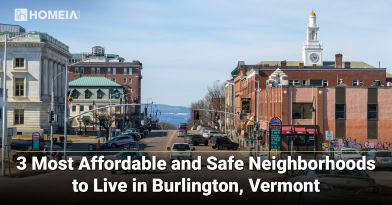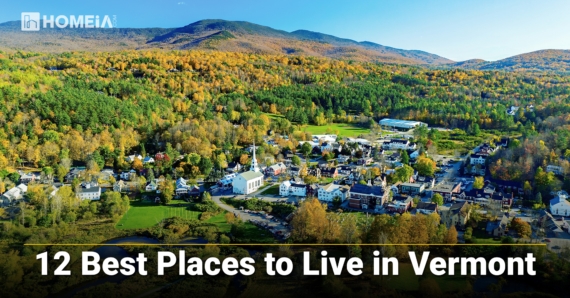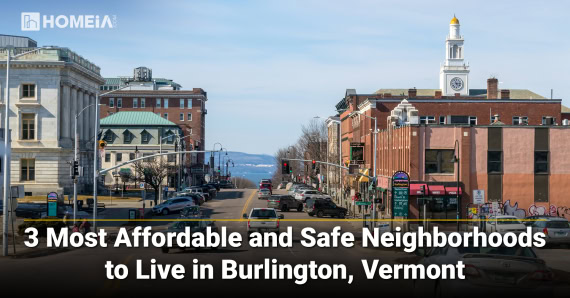The Pros and Cons of Living in Vermont
- Local Editor:Local Editor: Jody Andreoletti
Published: Aug 06, 2025
- Category: City Living Guide

Tucked into the heart of New England, Vermont offers postcard-worthy landscapes, a relaxed pace of life, and a strong sense of community. Known for its maple syrup, fall foliage, and progressive values, this small state is big on character. But while the Green Mountain State may sound like a peaceful paradise, living here isn’t for everyone.
From the charm of walkable towns like Burlington to the rural beauty of its rolling hills, Vermont appeals to those who prioritize outdoor living, safety, and sustainability. However, its long winters, limited job market, and higher costs may give some pause.
If you’re considering relocating, this guide will help you weigh the pros and cons of living in Vermont, spotlight the best cities and towns to call home, and give you a feel for the Vermont lifestyle—from community life and cuisine to recreation and affordability.
12 Best Places to Live in Vermont in 2025
We’ll take a closer look at some of the best places to reside in Vermont, considering factors such as cost of living, job opportunities and access to amenities. Whether you’re a lifelong resident of Vermont or looking for a change, keep reading to discover the best places to call home in this stunning state…
Table of Contents:
The Pros of Living in Vermont
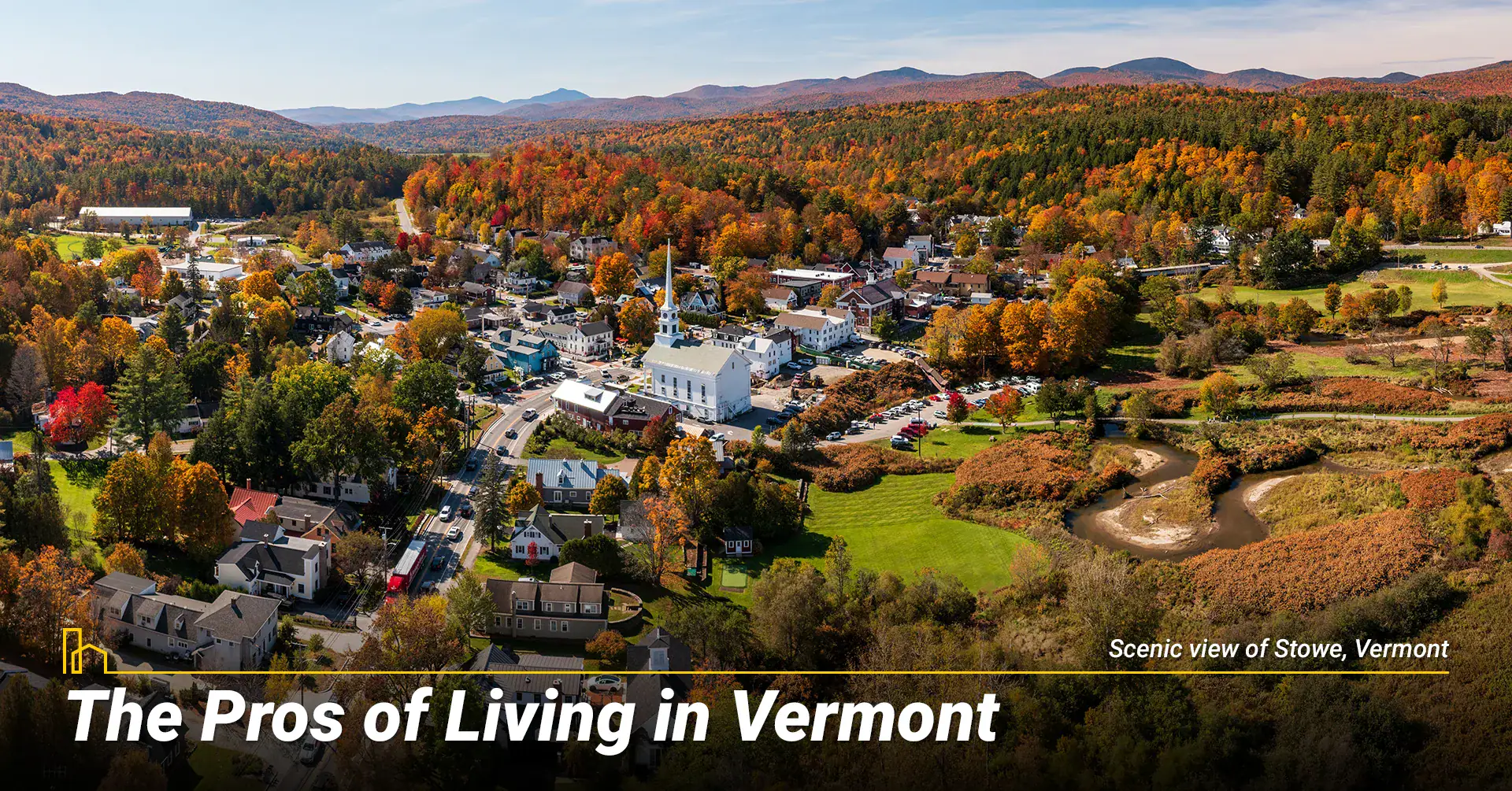
A. Natural Beauty and Outdoor Recreation
From mountain peaks to crystal-clear lakes, Vermont is an outdoor enthusiast’s dream. With more than 50 state parks and thousands of miles of hiking and biking trails, you’ll never run out of adventures. Winters bring ample snow for skiing, snowboarding, sledding, and snowshoeing, while summers are perfect for kayaking, camping, fishing, and cooling off in one of the many naturally carved out swimming holes.
B. Tight-Knit Communities
Vermonters are known for being welcoming, civic-minded, and community-oriented. Whether you’re in a town of 1,000 or 10,000, you’ll likely know your neighbors. Residents participate in town meetings, local events, and neighborhood gatherings. The slower pace and community focus make it a great place for those seeking meaningful connection.
C. Exceptional Safety Records
Vermont consistently ranks among the safest states in the nation, with the third-lowest crime rate at 173.4 per 100,000 people. The state ranks in the 78th percentile for safety, meaning it is safer than 78% of states. Six in 10 (60%) of Vermonters say they feel safe in their state, which is one of the highest confidence levels nationwide. Families, retirees, and solo residents alike enjoy the peace of mind that comes with safe communities and low crime.
D. Emphasis on Environmental Sustainability
As a leader in green energy and conservation, Vermont places a strong emphasis on protecting its natural resources. Many towns promote recycling, composting, and community-supported agriculture (CSAs). Solar panels are a common sight, and clean energy goals have widespread support.
E. High-Quality Public Education
Vermont has the fifth-best public schools in the nation, ranking eighth for quality, having the lowest pupil-to-teacher ratio in the country at 10.5-to-1. The state emphasizes individualized learning and community involvement in education. It’s also home to respected institutions like the University of Vermont, Norwich University, and Middlebury College.
F. Four-Season Living
If you enjoy distinct seasons, Vermont delivers. Crisp fall air, vibrant autumn leaves, snowy winters, fresh spring blooms, and warm summers provide a full range of seasonal experiences that support year-round outdoor lifestyles and local traditions. In addition to the flora, living amongst the fauna of Vermont is an exciting part of the experience. Healthy deer populations run throughout Vermont, and it is not uncommon to see them in backyards, fields, and crossing the road. Moose and coyotes are also part of the ecosystem, but are less seen. However, there are occasionally moose that walk through a town and excite the locals! Other local creatures include porcupines, skunks, opossums, raccoons, fisher (a type of marmot), foxes, and many species of wild birds. Vermont is also a breeding location for Monarch butterflies on their seasonal migration from South America.
Burlington’s Old North End, South End, and Downtown offer a unique mix of culture, creativity, and affordability. From historic charm to urban convenience and housing programs, each neighborhood showcases the city’s progressive spirit, rural appeal, and commitment to accessible living—making Burlington a standout destination for those seeking vibrant community life…3 Most Affordable and Safe Neighborhoods to Live in Burlington, Vermont
The Cons of Living in Vermont
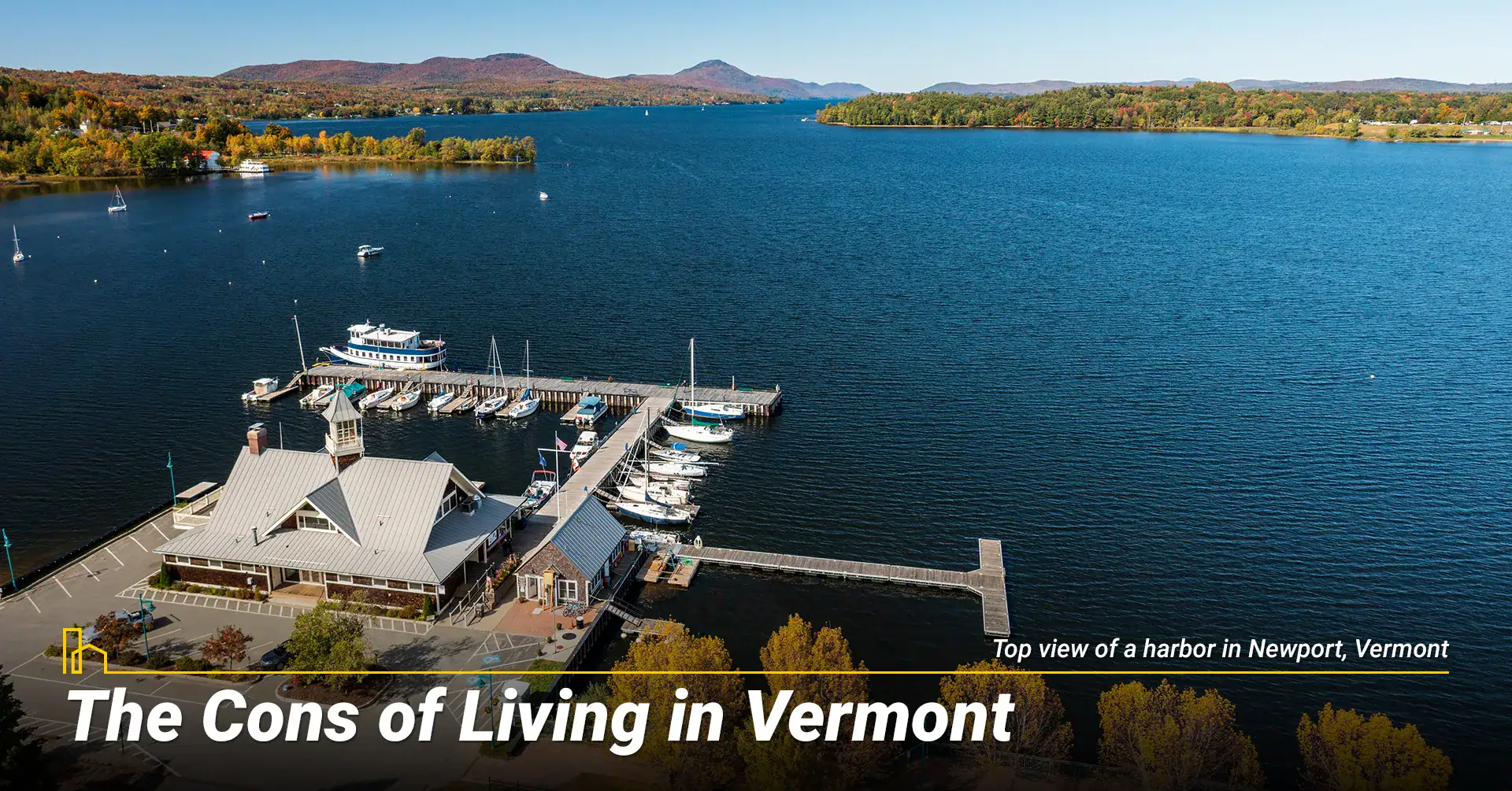
A. Long, Harsh Winters
Winters in Vermont are long and snowy. The state averages 80 to 100+ inches of snow annually, and temperatures can dip below zero. While this is great for winter sports fans, it can be a challenge for others—especially when it comes to heating costs, snow removal, and reduced sunlight.
- Heating often takes the form of oil, propane, electric, or wood stoves, and needs to run consistently throughout the winter, even if no one is living at the residence so that the water pipes don’t freeze.
- Snow removal can be easy to shovel if you have a short driveway. Otherwise, prepare to purchase a snowblower, a plow for your truck, or pay someone to plow your driveway.
- Reduced sunlight not only negatively affects your reliance on any solar panels for energy, but it can also reduce your personal energy levels. “Cabin fever” is a term Vermonters use to denote feeling stir-crazy around February and March as people reach their limit of staying indoors and experiencing frequent cloudy days.
B. “Mud Season”
As winter ends, the warmth of the sun unfreezes the ice that hardened the dirt roads of many rural communities, which leads to many dirt roads becoming slick with deep mud. On some of these roads, cars low to the ground will not be able to get through the mud, so vehicles with high clearance and 4-wheel drive are almost requirements. Living on a dirt road can be an idyllic life, surrounded by nature and few neighbors, but beware of how much dirt road you will need to pass during Mud Season and make sure you have the appropriate vehicle.
Important Things to Consider Before Hiring a Moving Company
Whether you’re moving from state to state or just across town, hiring the right moving company will make a world of difference. So, before you hire just anyone, here are a few things that you should definitely consider…
C. Above-Average Cost of Living
Vermont’s cost of living is 6-16% higher than the national average, depending on the source, driven primarily by housing and healthcare costs. Property taxes are particularly high, with an effective rate of 1.56% on owner-occupied homes. Housing costs vary significantly, with the average home value around $375,000 statewide, though Burlington median home prices can exceed $450,000.
D. Limited Job Market
Outside of Burlington and a few other hubs, Vermont offers limited employment options. The biggest industries include healthcare, education, agriculture, and tourism. Despite Vermont’s unemployment rate being exceptionally low at 2.6-2.7% (tied for second or third lowest in the nation), those seeking careers in tech, finance, or other corporate sectors may find fewer opportunities.
E. Limited Diversity
With a population that is 91.4% white, Vermont is one of the least racially and ethnically diverse states in the U.S. While the Hispanic population has grown by 68.4% and the Black population by 44% between 2010 and 2020, actual numbers remain low at 2.4% Hispanic and 1.4% Black. While many communities are welcoming, representation and multicultural experiences may be limited, especially outside of Burlington and Montpelier.
F. Aging Population
Vermont has one of the oldest median ages in the nation. This contributes to shrinking school populations and labor shortages in some sectors. Younger residents may find fewer peer-focused programs or nightlife options, depending on location.
G. Rural Isolation
While the scenery is beautiful, rural areas can feel isolating. Public transportation is minimal outside Burlington, and access to healthcare, entertainment, or major retailers often requires a long drive. This can be a drawback for newcomers used to urban amenities.
Recommended for you
Best Vermont Cities for Young Professionals
1. Middlebury
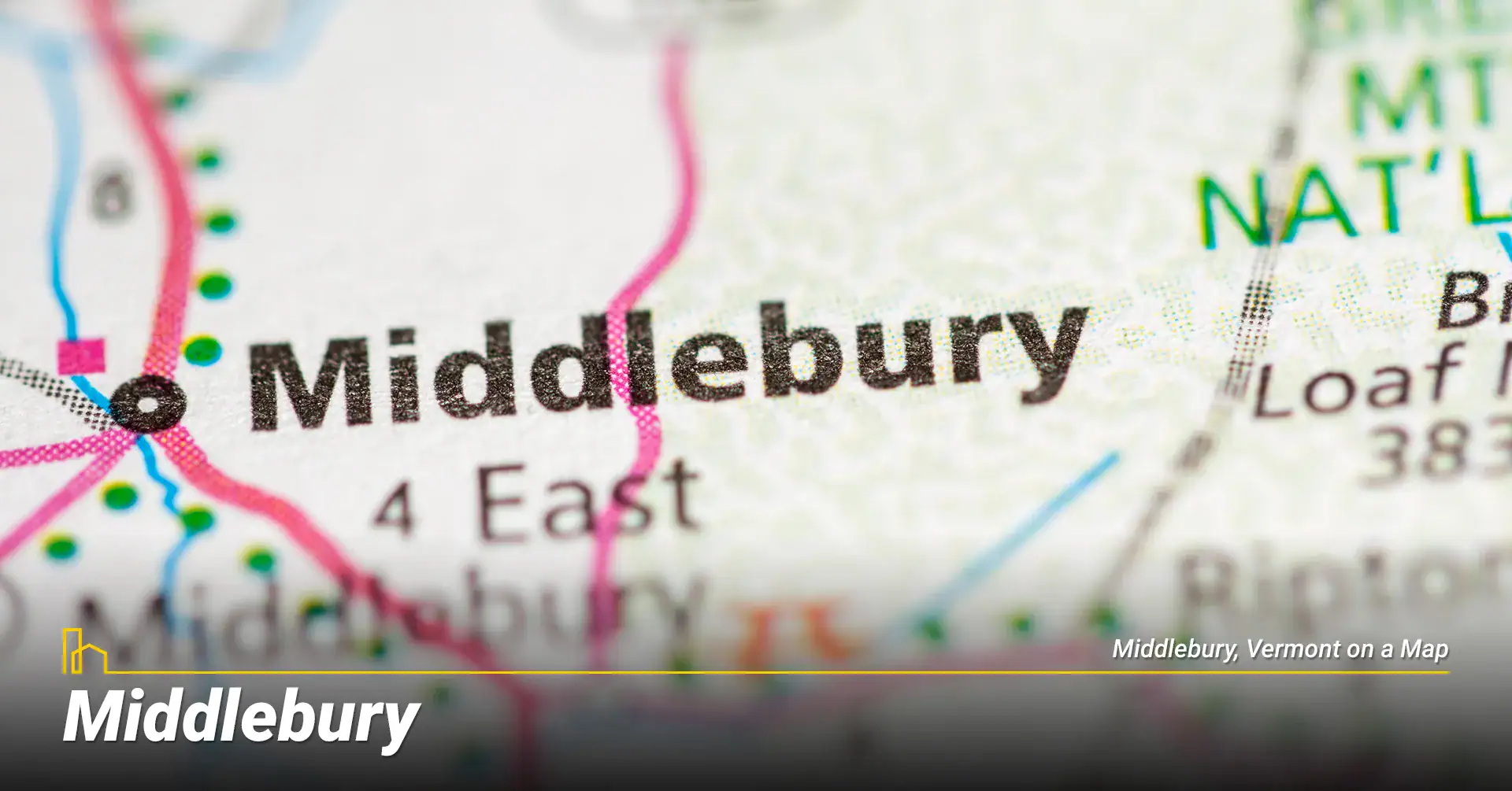
HOMEiA Score: 78/100
- Cost of Living: 9% above U.S. average
Median Home Price: $385,000
Median Household Income: $69,000
Home to prestigious Middlebury College, this historic town offers young professionals intellectual energy, cultural events, and sophisticated dining beyond typical small-town offerings. The walkable downtown features farmers markets and networking opportunities among educated residents, while providing easy access to skiing and Lake Champlain recreation. It also boasts having the largest candy store in Vermont.
2. Brattleboro
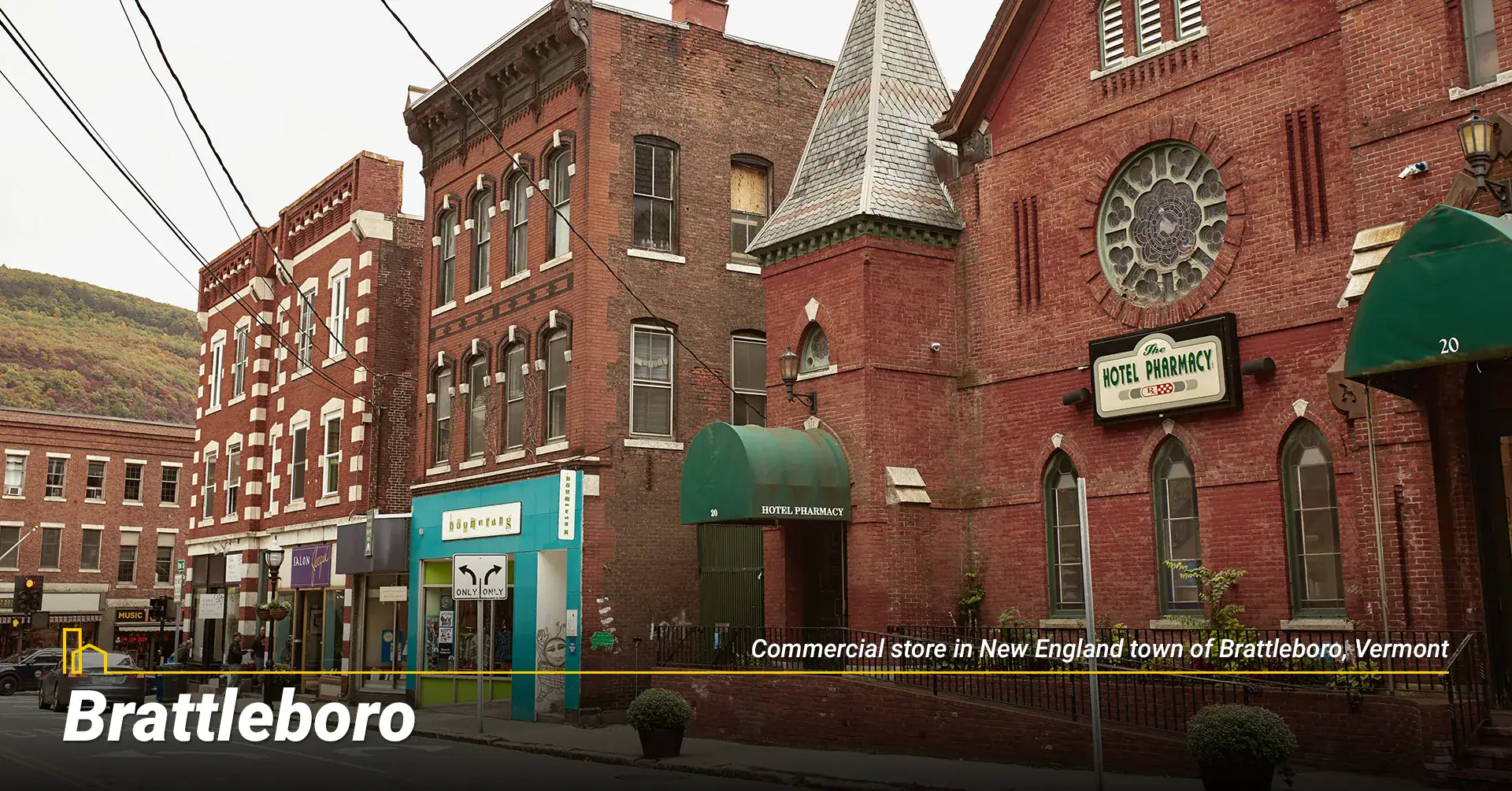
HOMEiA Score: 80/100
- Cost of Living: 8% above U.S. average
Median Home Price: $350,000
Median Household Income: $65,000
This bohemian Vermont gem attracts creative professionals with its vibrant arts scene, progressive politics, and thriving music venues. The walkable downtown features galleries, independent bookstores, craft breweries, and the historic Latchis Theatre. Regular art walks, farmers markets, and cultural festivals create abundant networking opportunities for environmentally-minded entrepreneurs.
For High-End Relocations, Luxury Moving Companies Deliver
Luxury moving experts offer personalized service and innovative solutions for transporting anything that requires extra care. Here are a few of the features a high-end moving company may be able to offer…
3. Winooski
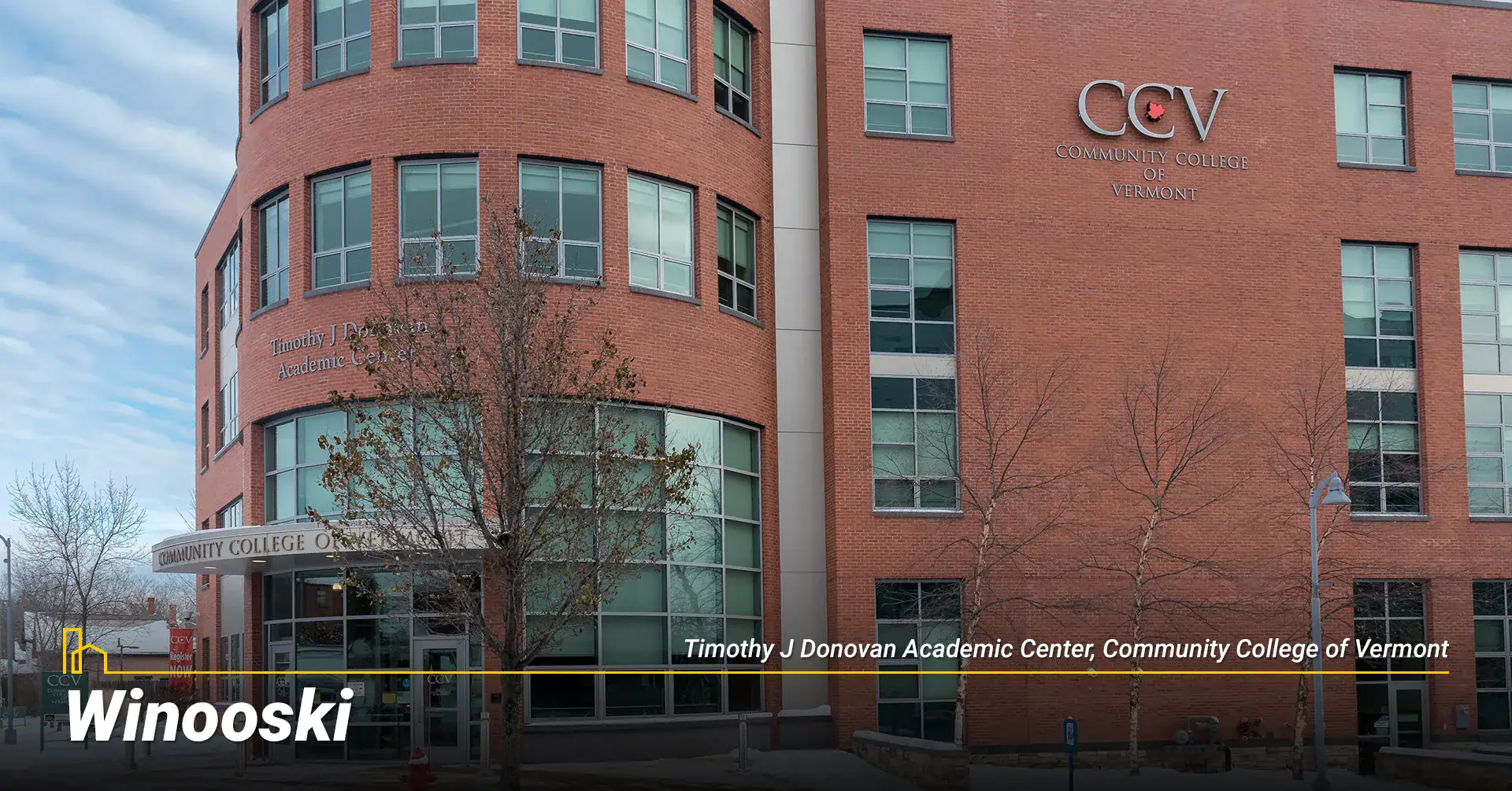
HOMEiA Score: 81/100
- Cost of Living: 10% above U.S. average
Median Home Price: $390,000
Median Household Income: $68,000
This former mill town turned millennial magnet offers young professionals a five-minute commute to Burlington with lower housing costs and tight-knit community feel. The revitalized downtown features diverse dining, craft breweries, converted mill apartments, and a growing tech startup scene along the scenic Winooski River. Local fact: Vermont was settled on land the Abenaki tribe lived on, and “Winooski” is the Abenaki word for ‘wild onion’. The Winooski River was known for wild onions growing along its banks.
4. Montpelier
HOMEiA Score: 83/100
- Cost of Living: 11% above U.S. average
Median Home Price: $410,000
Median Household Income: $72,000
America’s smallest capital offers young professionals stable government careers, nonprofit opportunities, and excellent work-life balance. The walkable downtown features farm-to-table restaurants, cultural events from Vermont College of Fine Arts, local entertainment and beautification projects sponsored by the Montpelier Alive committee, and abundant networking through professional associations. Professionals enjoy the sophisticated small-city atmosphere with outdoor recreation minutes away.
5. Burlington
HOMEiA Score: 85/100
- Cost of Living: 14% above U.S. average
Median Home Price: $475,000
Median Household Income: $75,000
Vermont’s largest city combines urban lifestyle with natural beauty, offering the state’s strongest job market in healthcare, education, tech, and major employers like Burton Snowboards. Young professionals enjoy Church Street Marketplace, Lake Champlain waterfront, active nightlife, and a thriving startup ecosystem with excellent public transportation and walkable neighborhoods. Burlington is also home to the University of Vermont, making the area a college town for most of the year.
27 Questions to Ask When Hiring a Moving Company
Hiring a moving company can be pretty daunting. You’re entrusting strangers with all your precious belongings, and you want to make sure they’re adequately insured, experienced, and licensed. In this blog post, we’ll cover some essential questions to ask when hiring a moving company and help you avoid moving mishaps…
Best Vermont Towns for Families
1. Stowe
HOMEiA Score: 82/100
- Cost of Living: 16% above U.S. average
Median Home Price: $600,000
Median Household Income: $92,000
This luxury ski destination offers families world-class winter sports, excellent schools, and year-round outdoor recreation including hiking and mountain biking. The strong community involvement, youth sports programs, and famous Winter Carnival and Hot Air Balloon Festival create family-friendly atmosphere balancing resort amenities with genuine Vermont spirit and safe neighborhoods. Stowe also boasts excellent restaurants, and a well-maintained bike path that winds through the town, local forests, and farmland all the way to the mountains.
2. South Burlington
HOMEiA Score: 83/100
- Cost of Living: 12% above U.S. average
Median Home Price: $480,000
Median Household Income: $89,000
Offering families top-rated schools, suburban convenience, and extensive recreational facilities including Wheeler Nature Park, this city provides easy Burlington access while maintaining a quieter residential atmosphere. Lake Champlain beaches, bike paths, shopping centers, and well-maintained neighborhoods create perfect work-life balance for active families. Be aware, though, that Burlington International Airport is located here, so you are likely to hear and see planes taking off or landing, some of which are Vermont National Guard F-35 fighter planes. Those can be fun to witness, but they are also very loud.
3. Essex Junction
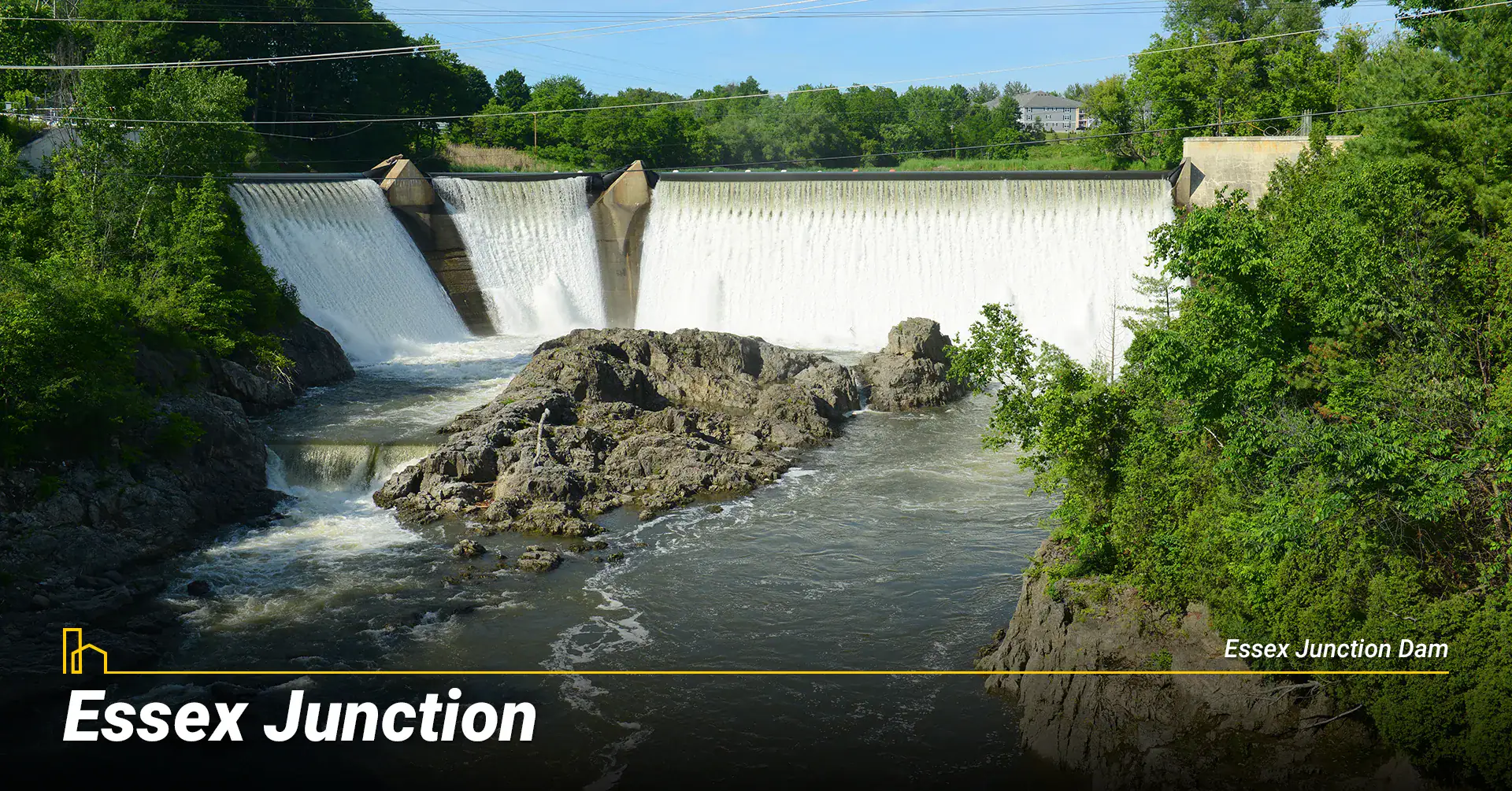
HOMEiA Score: 84/100
- Cost of Living: 11% above U.S. average
Median Home Price: $455,000
Median Household Income: $90,000
Families love this town for Vermont’s highest-performing schools, exceptional safety, and suburban tranquility with easy Burlington commuting access. Tree-lined streets, larger yards, newer developments, and strong parent involvement in excellent extracurricular programs create ideal child-rearing environment balancing small-town community with urban convenience. Champlain Valley Expo in Essex brings in many artists and events for families, like the Champlain Valley Fair, horse shows, and tractor pulls.
15 Things People Usually Forget When Moving
Whether or not you decide to hire a professional moving company, this guide includes everything you need for completing your move. It’s always best to have this list handy so you can check off each task and know that you’re on top of everything…
4. Norwich

HOMEiA Score: 85/100
- Cost of Living: 14% above U.S. average
Median Home Price: $570,000
Median Household Income: $105,000
Located near Dartmouth College, this quintessential Vermont town offers families top-rated schools, historic charm, and highly educated community. The college atmosphere provides cultural events and educational opportunities while beautiful historic homes, strong civic engagement, and nearby outdoor recreation create intellectually stimulating environment perfect for education-focused families.
5. Williston

HOMEiA Score: 86/100
- Cost of Living: 13% above U.S. average
Median Home Price: $500,000
Median Household Income: $98,000
The top family destination offers excellent schools, modern housing developments, and convenient access to Burlington and Montpelier for working parents. Strong property values, newer infrastructure, shopping centers, and recreational programs create ideal suburban environment. Regular family events and strategic location provide career opportunities while ensuring safe, nurturing community for children.
Recommended for you
Best Places to Retire in Vermont
1. Randolph
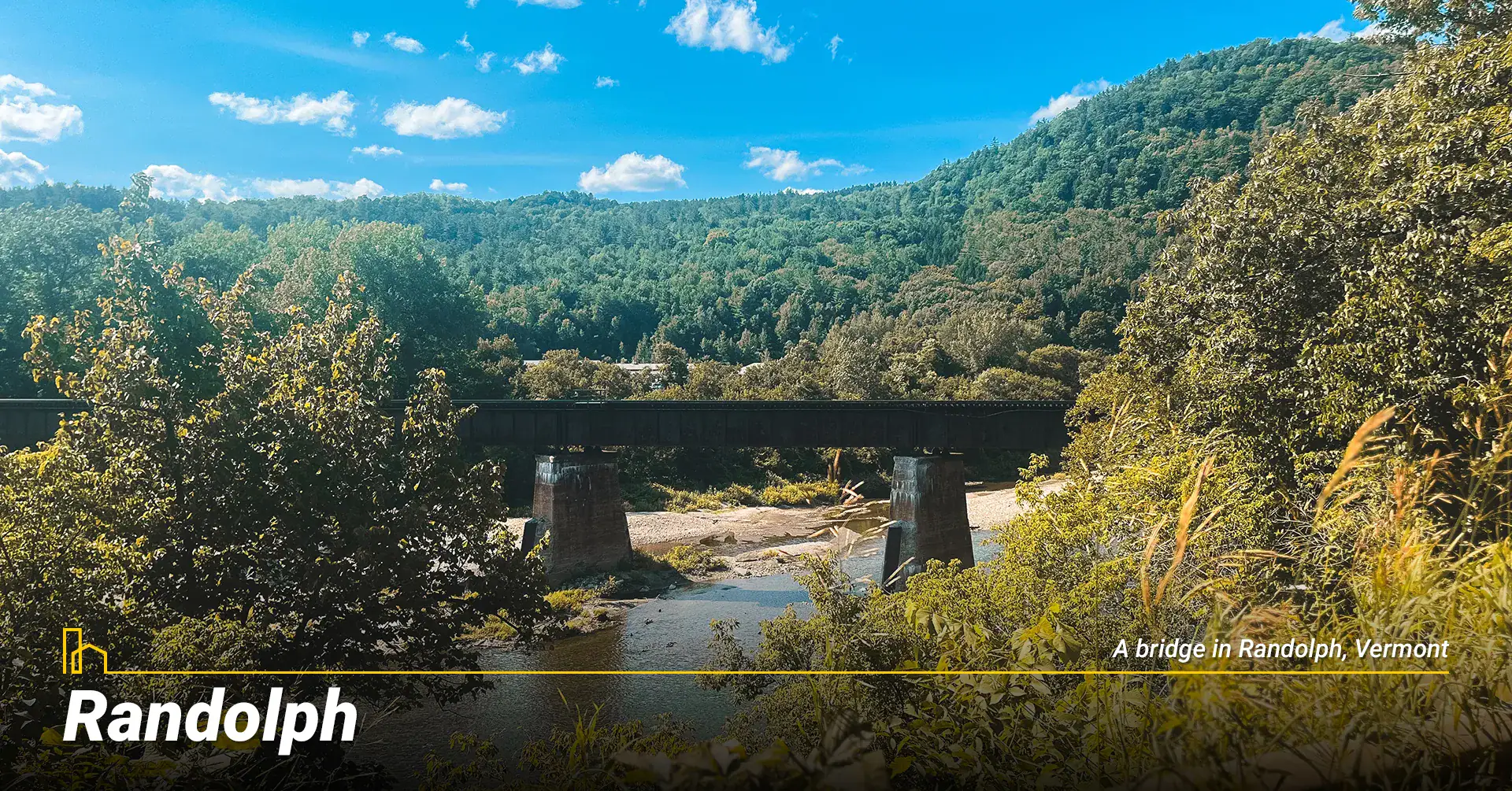
HOMEiA Score: 78/100
- Cost of Living: 7% above U.S. average
Median Home Price: $325,000
Median Household Income: $59,000
Ideal for retirees seeking authentic Vermont living without tourist crowds, this quiet town offers genuine community where neighbors know each other. Local farms, historic architecture, and peaceful atmosphere provide affordable retirement with excellent outdoor recreation access while maintaining convenient connections to larger cities when needed. Gifford Hospital is located in Randolph, giving some peace of mind in case of medical emergency.
2. St. Johnsbury

HOMEiA Score: 80/100
- Cost of Living: 6% above U.S. average
Median Home Price: $295,000
Median Household Income: $58,000
Also known as St. J, this Northeast Kingdom’s cultural hub offers retirees exceptional affordability with Fairbanks Museum and Observatory, Athenaeum library, and regular arts events. Victorian architecture, walkable downtown, and friendly community welcome newcomers while providing excellent value, outdoor recreation access, and local healthcare in beautiful, peaceful surroundings.
15 Essential Steps for Moving to a New City
If you’re moving to a new city, though, the process is even more complicated. Without the ability to make a quick trip here and there, you’ll need a detailed plan to keep everything running smoothly. This guide to relocation will help you make a plan and check all the boxes so your move will be as painless as possible...3. Bennington
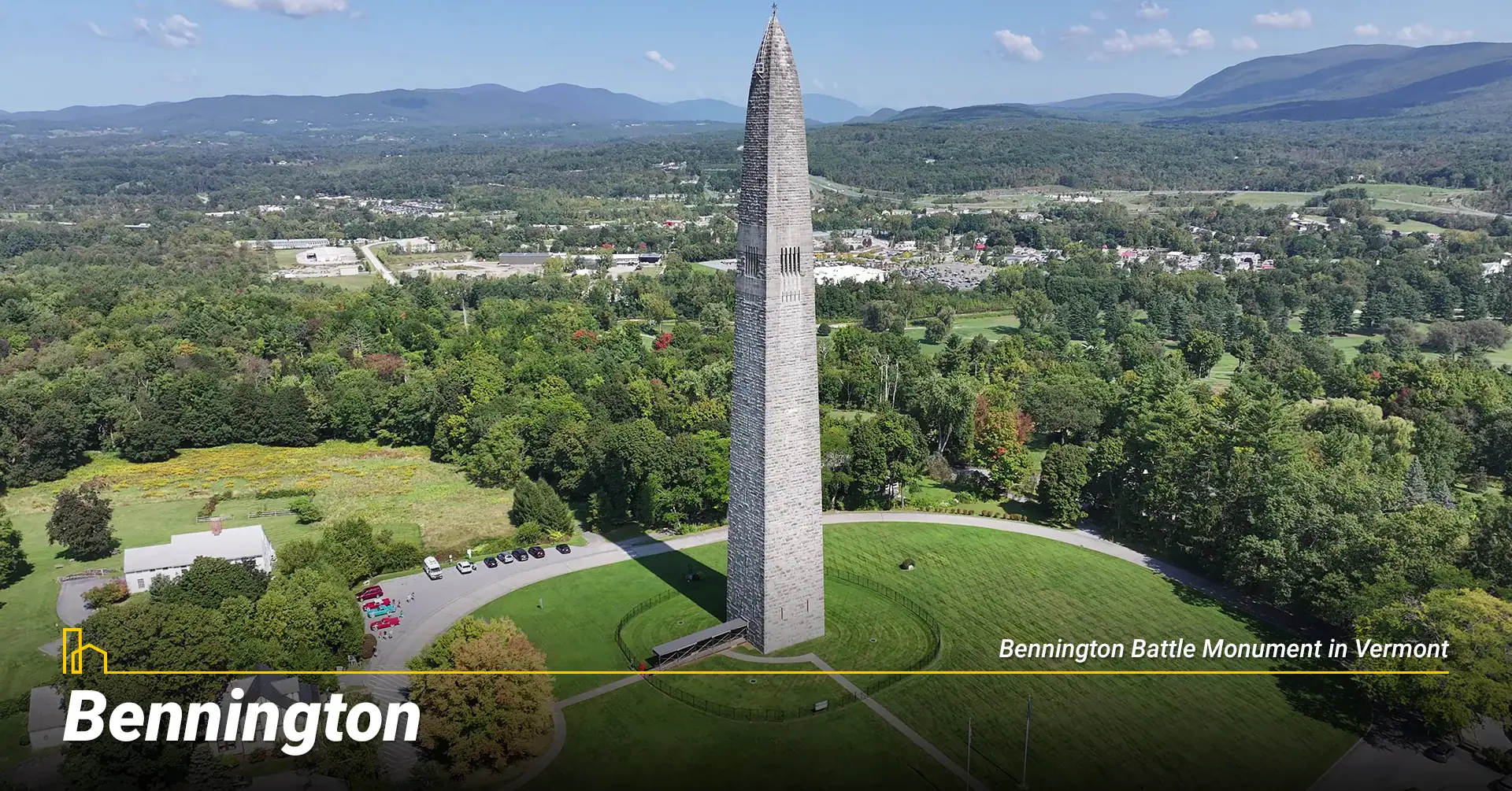
HOMEiA Score: 81/100
- Cost of Living: 8% above U.S. average
Median Home Price: $330,000
Median Household Income: $60,000
This historic Revolutionary War town offers retirees walkable downtown culture with art galleries, Oldcastle Theatre Company, and comprehensive healthcare at Southwestern Vermont Medical Center. Bennington College adds intellectual vibrancy while senior programs, volunteer opportunities, and beautiful parks create active retirement lifestyle in charming setting. Living here, you will also become familiar with the Battle of Bennington, which is a state holiday celebrating Vermont’s role in the Revolutionary War.
4. Manchester
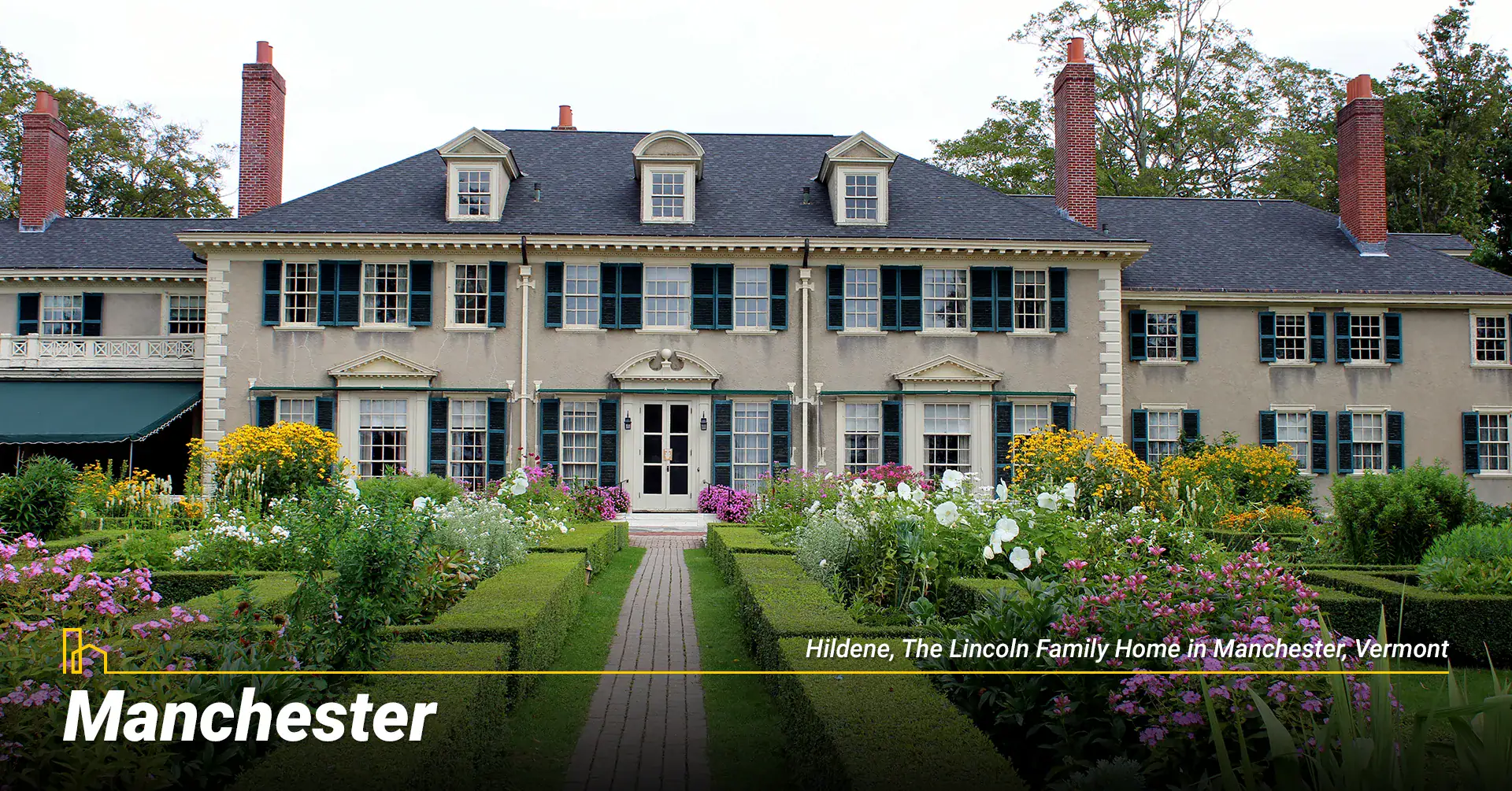
HOMEiA Score: 82/100
- Cost of Living: 13% above U.S. average
Median Home Price: $510,000
Median Household Income: $72,000
This upscale mountain town blends designer outlet shopping, fine dining, and luxury resort amenities for sophisticated retirees. Beautiful architecture, manicured landscapes, excellent golf courses, and premium location create an elegant atmosphere. Higher costs reflect quality amenities ideal for retirees seeking upscale lifestyle with hiking trails and cultural events.
5. Woodstock

HOMEiA Score: 84/100
- Cost of Living: 15% above U.S. average
Median Home Price: $520,000
Median Household Income: $70,000
Vermont’s most picturesque town offers retirees stunning 19th-century architecture, postcard-perfect village green, and exceptional cultural amenities including Billings Farm Museum, the VINS raptor conservation center, and Quechee Gorge. Strong community engagement through volunteer opportunities, social clubs, fine dining, and boutique shopping create sophisticated retirement environment preserving historic charm with modern conveniences.
30 Best Packing Tips for Moving to a New City
How do you get everything safely from Point A to Point B on a tight schedule? With a lot of planning. Here are our best tips to make the process of moving to a new city as smooth as possible…
Vermont Lifestyle: Arts, Food, and Recreation
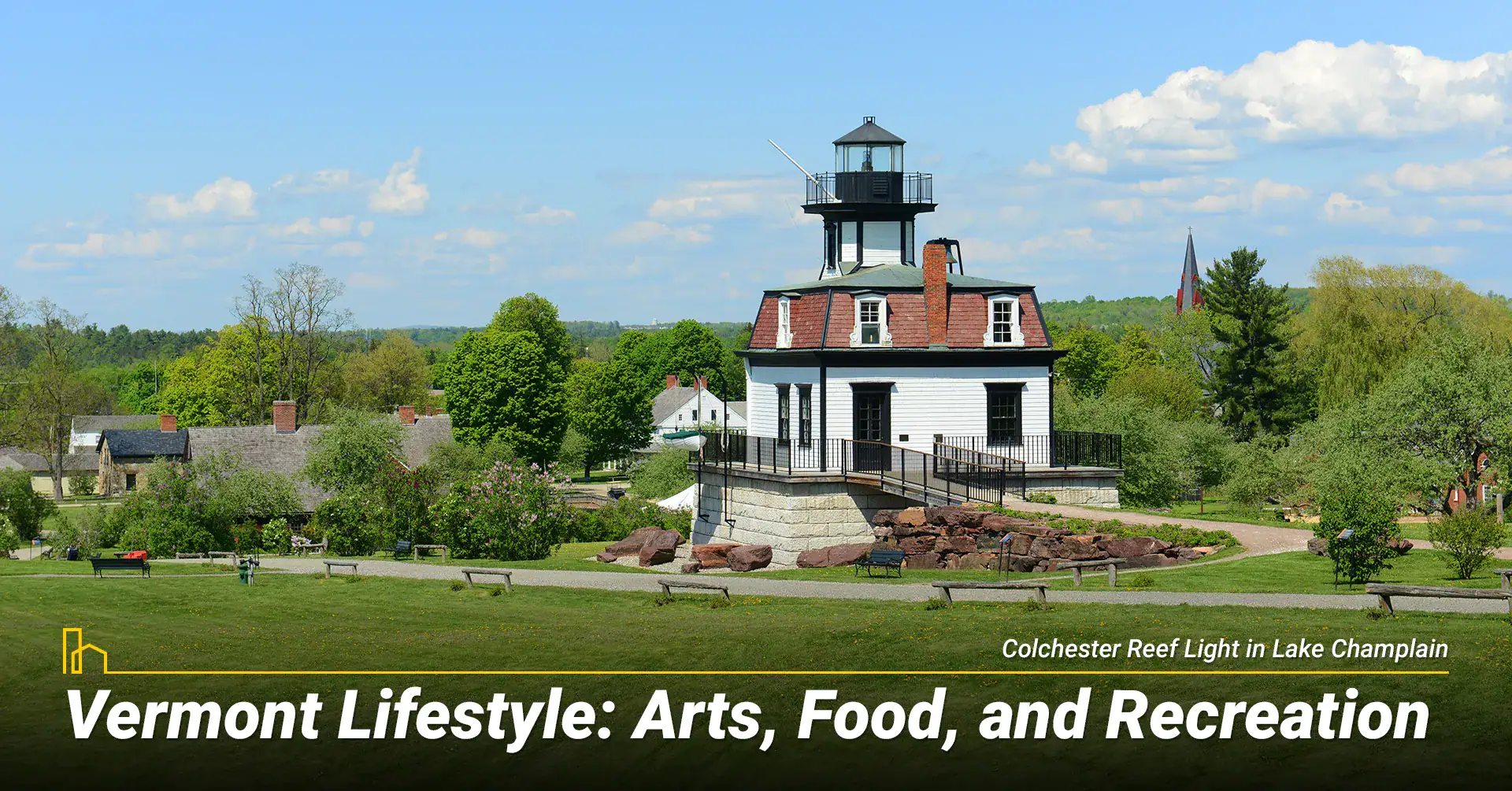
A. Arts and Culture
Vermont has a vibrant arts scene fueled by local talent, community theaters, and university programs. Places like Montpelier, Brattleboro, and Middlebury boast galleries, concerts, and festivals year-round, helping preserve Vermont’s culture and creative spirit.
B. Culinary Scene
Home to farm-to-table restaurants, award-winning cheese makers, craft breweries, and its famous maple syrup, Vermont’s food scene is fresh, local, and full of flavor. Farmers markets thrive in nearly every town, and seasonal cuisine is a point of pride.
C. Outdoor Recreation
Whether you’re skiing at Killington, hiking the Long Trail, or kayaking on Lake Champlain, Vermont offers endless ways to stay active. Outdoor life is central to Vermont’s identity, and residents enjoy all four seasons of activities.
D. Seasonal Events
Each season brings signature celebrations—fall foliage tours, maple festivals, winter carnivals, and summer fairs. These events foster strong community ties and attract visitors from across New England.
Conclusion: Is Vermont Right for You?
If you value natural beauty, safety, community connection, and a slower pace of life, Vermont may be your ideal destination. However, the long winters, limited diversity, and smaller job market aren’t for everyone. For remote workers, retirees, and nature enthusiasts, Vermont offers unmatched charm and quality of life. If that sounds like you, the Green Mountain State could feel like home.
Recommended for you
Frequently Asked Questions About Living in Vermont
1. Is Vermont a good state to retire in?
Yes. Vermont is exceptionally safe, scenic, and rich in community, though winters and healthcare access vary by region. The state offers excellent outdoor recreation, cultural activities, and strong social networks, but consider heating costs and proximity to medical facilities when choosing your location.
2. How expensive is it to live in Vermont?
Costs are about 6-16% above the national average, with high property taxes and housing costs in popular areas. Housing represents the biggest expense, especially near Burlington and ski towns. However, many residents find the quality of life, safety, and natural beauty justify the higher costs.
3. What is the job market like?
Small but robust. Vermont has one of the lowest unemployment rates in the nation at 2.6-2.7%. Healthcare, education, and tourism dominate. Remote workers thrive here. The state actively supports entrepreneurship and small businesses, while Burlington offers the most diverse employment opportunities including tech and manufacturing sectors.
4. Is Vermont family-friendly?
Yes. Schools are excellent (5th best in the nation), and community is strong. Many schools incorporate education in nature, and take advantage of the natural environment for afterschool care options. There are even pre-schools who operate almost exclusively outdoors. However, entertainment and services can be limited in rural areas. Families love the outdoor recreation opportunities, safe neighborhoods, and strong parent involvement in schools, though urban amenities may require travel to larger towns.
5. Does Vermont get a lot of snow?
Yes. Expect 80-100+ inches per year in many regions. Great for winter sports lovers, but tough on commutes. Town and highway snow removal services are excellent, and most Vermonters are well-prepared with proper vehicles, snow tires, winter driving skills, and equipment, like ice scrapers, brushes, and shovels. Many embrace winter activities like skiing, snowshoeing, and ice fishing, which helps the winter pass and off-sets “cabin fever” in the spring.
6. Is Vermont diverse?
Not particularly. It is one of the least diverse states (91.4% white) but is generally welcoming and inclusive, with growing minority populations. Burlington and Montpelier offer more diversity, while rural areas remain predominantly white. The state actively promotes inclusion and supports newcomers from different backgrounds.
An Ultimate Guide to Moving for Home Buyers and Sellers
Buying and selling a home doesn’t make you an expert in moving. Buying and selling are much more different when you’re actually moving. Carefully go through the tips listed below and uses these as your ultimate guide whenever moving…
7. How is internet access in rural Vermont?
Improving, especially with federal broadband initiatives, but still limited in remote areas. Most towns have reliable high-speed internet, essential for Vermont’s growing remote workforce. Check availability before relocating, as some rural properties may have limited options or require satellite internet connections.
8. What are the tax implications of living in Vermont?
Vermont has a graduated income tax (3.35% to 8.75%), 6% sales tax, and high property taxes at 1.56% effective rate. However, there’s no sales tax on most food items and clothing under $110. The state offers various tax credits and exemptions for seniors, veterans, and low-income residents to help offset costs.
9. How long are Vermont winters and what should I expect?
Winters typically last from December through March. However, it is not uncommon to experience snow in October, November, or April, making the feel of winter significantly longer than three months. Expect consistent below-freezing temperatures, significant snowfall, longer commutes, and higher heating costs. Vermont winters often experience at least one “deep freeze” where the temperatures dip below zero for several days. Many residents embrace winter sports and activities to make the most of the season. Proper preparation helps to ease the difficulties of winter, including snow tires, warm clothing, winter driving skills, shovels, and reliable heating systems.
10. Is it easy to make friends and integrate into Vermont communities?
Vermonters are generally welcoming, especially in smaller towns where community involvement is valued. Joining local organizations, attending town meetings, volunteering, or participating in seasonal activities are great ways to meet people and integrate into the community. The slower pace and emphasis on neighborliness help newcomers build lasting relationships and feel at home.
Table of Contents:
Jody Andreoletti lives in Vermont with her two daughters and golden retriever. With degrees in foreign languages and information security, Jody’s niche has become writing and editing to help others improve their communication, whatever the project may be. When she is not writing or editing, Jody is an avid gardener, and trains and instructs in Brazilian Jiu-Jitsu.
HOMEiA is a city guide site where visitors can find detailed information about communities of interest. HOMEiA’s City Guides, created in partnership with local writers and editors, are curated lists of the best, safest, and most affordable places to live. The guides feature the HOMEiA Score, a proprietary index that rates communities on such factors as housing costs, education, employment, etc.
HOMEiA.com aims to be the premier site for people planning to relocate, providing them with insightful content and connecting them with skilled real estate professionals.
We also empower real estate professionals to establish or strengthen their web presence by highlighting their experience, knowledge and achievements. If you’re selected to join our list of certified real estate professionals, you will distinguish yourself from your peers — and earn HOMEiA’s support.
If you believe in HOMEiA’s mission, please share our website with others.


